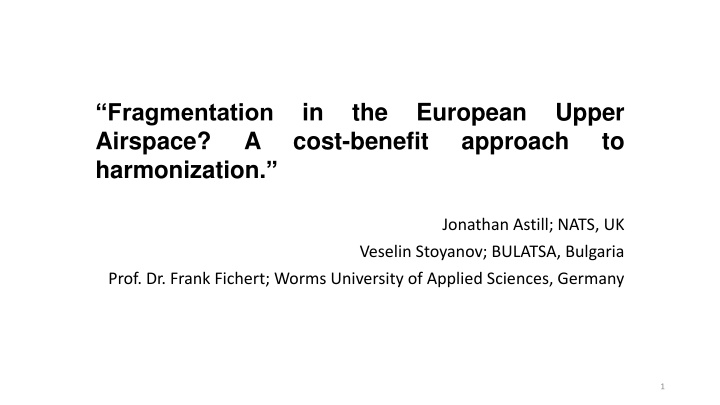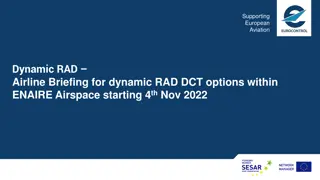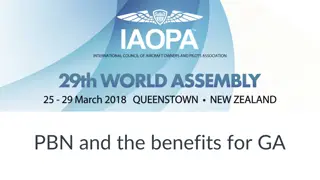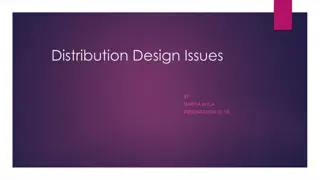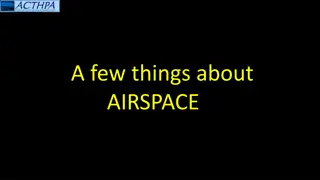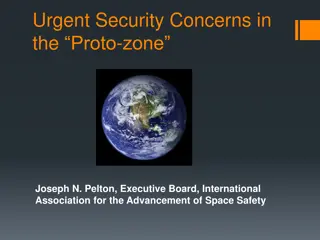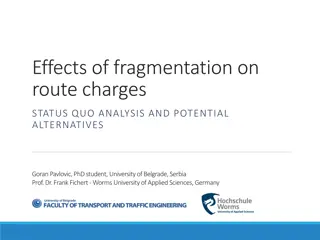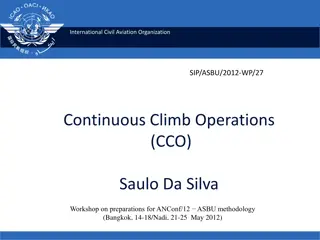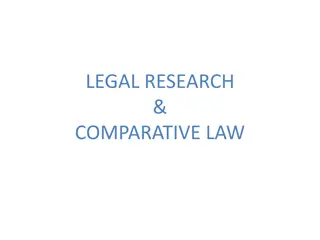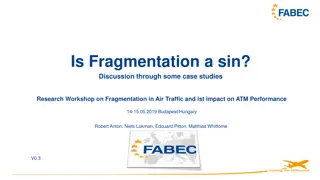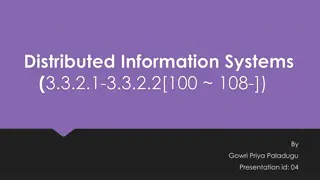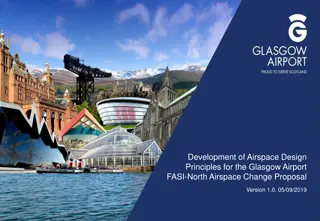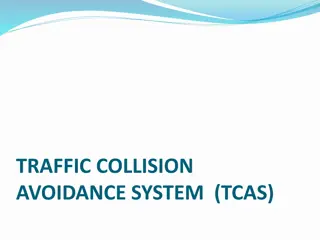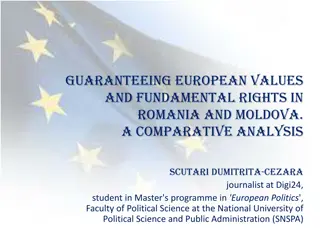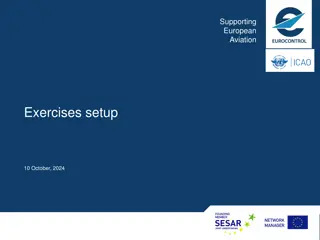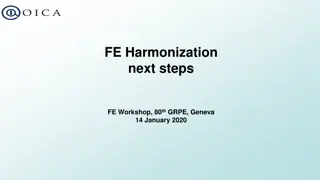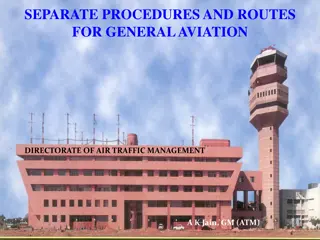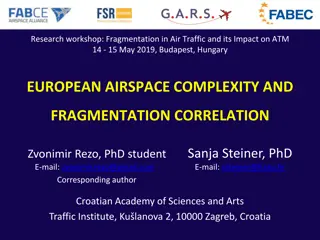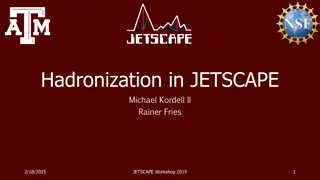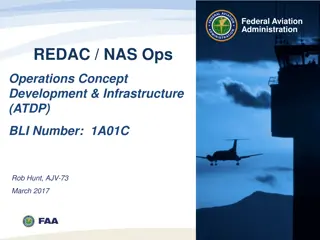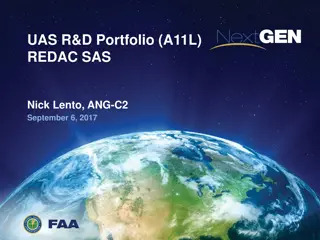European Airspace Fragmentation and Harmonization: A Comparative Study
This article delves into the cost-benefit analysis of the European approach towards upper airspace fragmentation and harmonization. Contributors from various countries provide insights and perspectives on the challenges and opportunities in this domain, shedding light on the importance of unified airspace management. The study aims to facilitate a better understanding of the implications and potential solutions for optimizing airspace usage and enhancing overall aviation efficiency.
Download Presentation

Please find below an Image/Link to download the presentation.
The content on the website is provided AS IS for your information and personal use only. It may not be sold, licensed, or shared on other websites without obtaining consent from the author.If you encounter any issues during the download, it is possible that the publisher has removed the file from their server.
You are allowed to download the files provided on this website for personal or commercial use, subject to the condition that they are used lawfully. All files are the property of their respective owners.
The content on the website is provided AS IS for your information and personal use only. It may not be sold, licensed, or shared on other websites without obtaining consent from the author.
E N D
Presentation Transcript
in cost-benefit the European approach Upper Fragmentation Airspace? harmonization. A to Jonathan Astill; NATS, UK Veselin Stoyanov; BULATSA, Bulgaria Prof. Dr. Frank Fichert; Worms University of Applied Sciences, Germany 1
What is fragmentation? Fragmentation is defined as the impact of having a system that has developed within the constraints both of national boundaries, and of historical decisions that may have become sub-optimal with technological or demand changes . Source: The impact of fragmentation in European ATM/CNS , by EUROCONTROL, 2006 2
The impact of fragmentation in European ATM/CNS : The total cost of fragmentation in ACCs and ATM systems taken together is 780 million EUR a year. The defragmented system might have prohibitive costs indeed, achievement of such a system might be completely infeasible. transition from the existing system to an idealised, 25 sectors (per ACC) is a conservative assumption for a non- fragmented system. 3
The 3 principle issues which are labelled as being due to fragmentation are: Disparate regulatory regimes or capabilities Disparate or at least non interoperable technical systems with variable capabilities Route network(s) and charging regimes that force airlines not to take the most direct routeings 4
Route Network & Charging Regimes The most economic routeing still may not necessarily be the shortest or most fuel efficient Staff and technology costs driven by the complexity of the operations If the ANSPs were encouraged to price the upper air services separately from the terminal area services then the price for that service may become much more similar across Europe. 5
FRA is an airspace concept which is at a very advanced stage Cross-border and inter-FAB FRA projects are real examples of defragmentation of the European airspace on a large scale. By 2019 the FRA application is an achievement in every FAB and FABs have proven to be efficient platforms to build the defragmentation benefits in the airspace. 6
Technical Systems & Interoperability Updating the systems is complex due to the need to keep operations functioning 24/7 COOPANS - a single system already deployed with 5 ANSPs and in the process of deployment at a 6th. iTEC and Co-Flight - both of these systems are on the verge of deployment and will bring the technical systems across Europe to a level of capability superiority 7
Regulatory Regimes Complex regulatory frameworks with highly interdependent set of SES & EASA regulations Member States should all agree to set aside national regulatory and cultural frameworks 8
A proposal for the future architecture of the European airspace Launch airspace re-configuration supported by an operational excellence programme to achieve quick wins Realise the de-fragmentation of European skies through virtualisation and the free flow of data among trusted users across borders Create a legal and financial framework that rewards early movers 9
A proposal for the future architecture of the European airspace Digital technology and ATM Data Service Providers will be able to create a cloud-type service layer The choice for the customers of ATM will be greater, much more efficient and transparent as to the number of fragments from which it is comprised De-fragmentation here is supposed to be achieved by the availability of these fragments but acting in an absolutely different way 10
Economic aspects of (de-)fragmentation Operational level to be analysed: - ANSP - ACC - Sector Indicators: - Productivity => Output / Input (partial vs. total either incomplete or aggregation necessary) - Cost efficiency => Cost / Output (aggregation of outputs necessary e.g. Composite Flight Hours, CFH) 11
Economic aspects of (de-)fragmentation Size and layout of operational units: Potential productivity increase ANSP A ANSP B ANSP A ANSP B Merging sectors in low traffic periods Cross border design of sectors according to traffic flows 12
Economic aspects of (de-)fragmentation Staff flexibility (e.g., on average less backup needed with increasing number of staff which might perform the same tasks similar to airlines fleet homogeneity) Overhead functions (usually showing economies of scale ) Countervailing power (purchasing equipment cost efficiency increases) Complexity of larger units (X-Inefficiency diseconomies of scale US example) 13
Options to overcome fragmentation Cooperation Limited potential (in particular operational cooperation) Concentration ( Mergers ) Always cross-border merger Larger benefits (compared to cooperation) only if also consolidations of operational units (e.g. ACCs) and/or headquarters differences in personnel costs matter Political feasibility? Joint procurement difficult (see example strategic airline alliances) In general: Optimum structure changes over time (due to changing traffic flows and changing technology) Path dependency (with high share of irreversible investment including staff training) 14
Conclusions Fragmentation must be clearly defined if this term will play a role for policy purposes FRA is the ultimate tool to remove the airspace fragmentation but disparate regulation, charging and technology are in the way The Airspace Architecture proposal aims to explore new avenues by means of innovative data services 15
